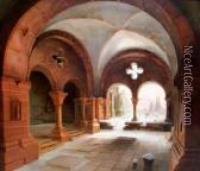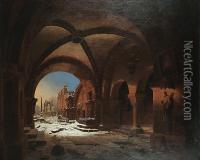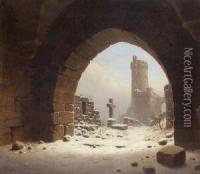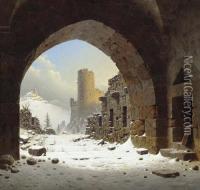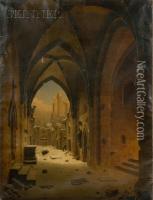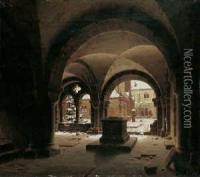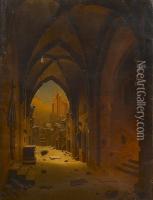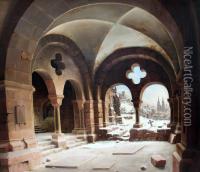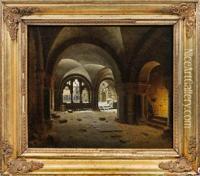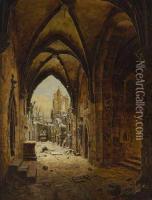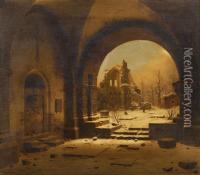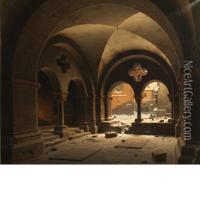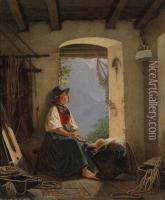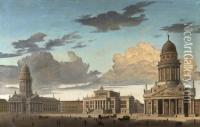Carl Georg Adolf Hasenpflug Paintings
Carl Georg Adolf Hasenpflug was a German artist renowned for his architectural paintings, particularly of Gothic cathedrals and ruins, which are imbued with a romantic, sometimes melancholic atmosphere. Born on March 22, 1802, in Berlin, Hasenpflug initially embarked on a career in architecture under the guidance of Karl Friedrich Schinkel, a leading Prussian architect. However, his passion for painting soon led him to pursue art full-time, focusing on the architectural splendor of his homeland.
Hasenpflug's work is characterized by its meticulous attention to detail and a dramatic use of light and shadow, often highlighting the intricate features of Gothic architecture. He had a profound interest in depicting medieval churches, abbeys, and castles, many of which were in states of ruin by his time. This focus not only showcased his technical skill and architectural knowledge but also reflected the romantic era's fascination with the past and the sublime.
Throughout his career, Hasenpflug traveled extensively across Germany, capturing the architectural beauty of its cities and landscapes. His paintings often featured the towering spires and detailed facades of cathedrals, set against the backdrop of the German countryside or urban settings. These works not only serve as artistic representations but also as historical documents of Germany's architectural heritage during the 19th century.
Despite his talent and the quality of his work, Hasenpflug did not achieve significant fame during his lifetime. It was only posthumously that his contributions to German art and the genre of architectural painting were fully recognized. Today, his paintings are appreciated for their beauty and historical value, offering viewers a glimpse into the romantic period's fascination with architecture and ruins.
Carl Georg Adolf Hasenpflug's legacy is preserved in various art collections and museums across Germany and beyond. His dedication to capturing the essence of Gothic architecture and his ability to imbue his works with a sense of historical depth and emotional resonance continue to make him a notable figure in the field of 19th-century art. He passed away on October 4, 1858, leaving behind a body of work that continues to inspire and captivate art lovers and historians alike.

